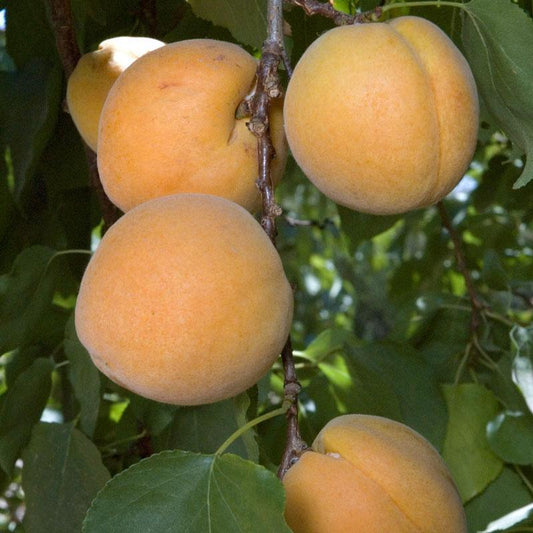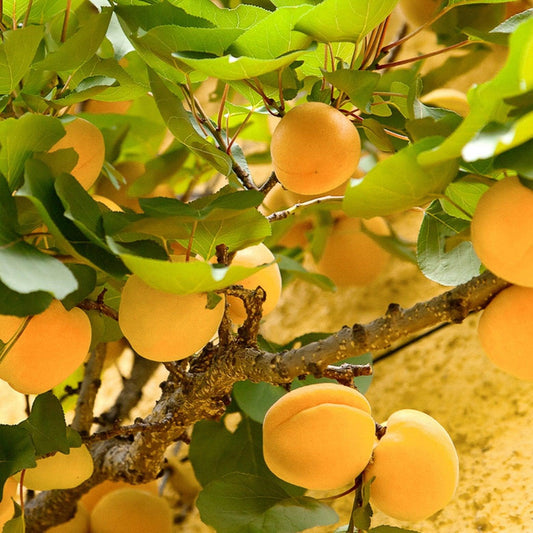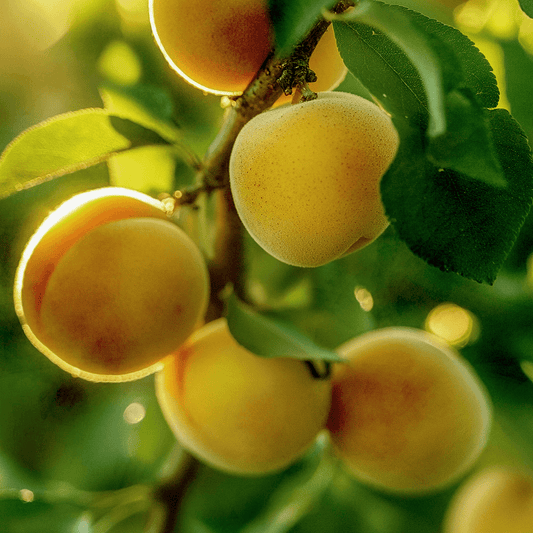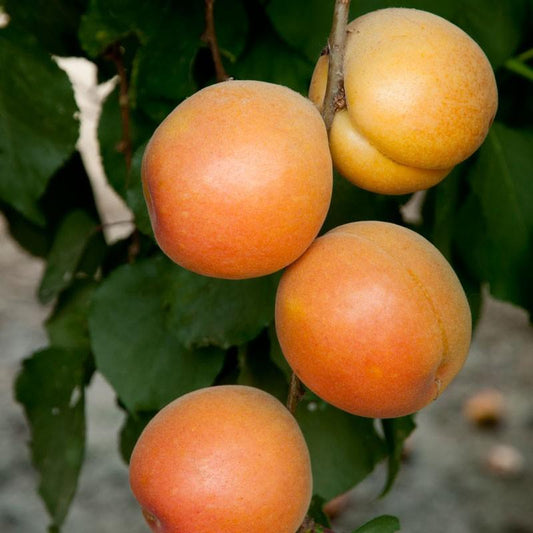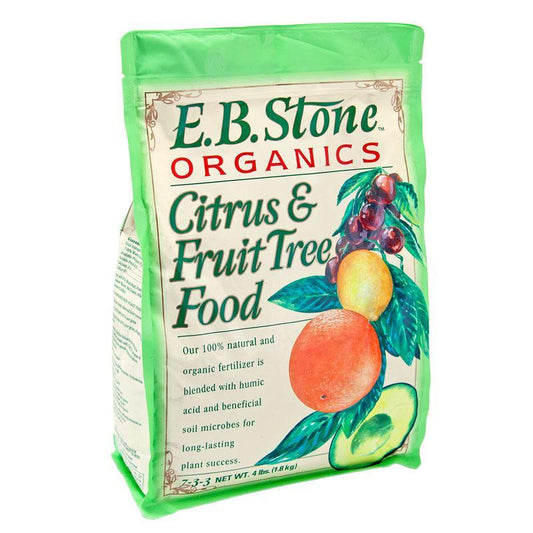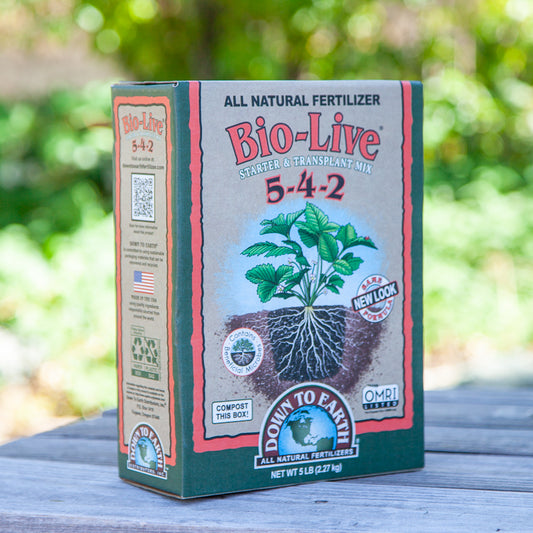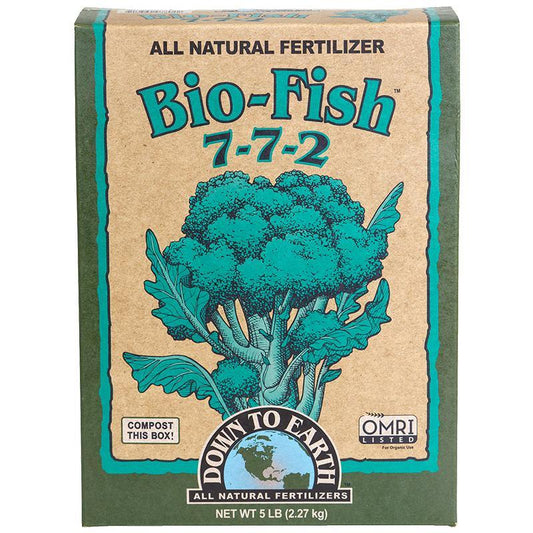How to Water Your Apricot Tree and Choose the Right Fertilizer
Growing apricot trees successfully starts with one simple truth: consistent watering and the right fertilizer make all the difference. Whether you’re cultivating young apricot trees or caring for established trees that already bear fruit, understanding how to balance water, nutrients, and organic matter is key. In this guide, we’ll cover how to water, when to fertilize, and what is the best fertilizer for apricot trees—especially if you’re growing them in California’s diverse climates.

Understanding Apricot Tree Care
Apricot trees are beloved members of the stone fruit family, known for their golden, flavorful fruit. Healthy apricot tree care focuses on proper watering, seasonal fertilization, pruning, and maintaining well-drained soils. To thrive and produce fruit, apricot trees need full sunlight, good air circulation, and nutrient-rich soil.
If you’re just getting started, learn how to grow an apricot tree from seed and establish healthy roots before moving on to fertilization. Proper foundation leads to stronger trees that resist stress and disease later in life.
How to Water an Apricot Tree
Watering Basics
Apricots growing in drained soils benefit most from deep, consistent irrigation. Young trees need frequent moisture to develop roots, while mature trees prefer deeper, less frequent watering to avoid root rot.
- Young Apricot Trees: Water 1–2 times per week in the first year, delivering 10–15 gallons per session. Keep the soil moist but never soggy.
- Established Trees: Water every 2–3 weeks during the growing season. Increase frequency during hot, dry spells or when trees are in fruit production.
- Dormant Season: Reduce watering in winter when growth slows.
Best Irrigation Methods
Drip irrigation systems are the most efficient choice for apricot tree care, providing slow, deep watering that minimizes waste and disease risk. Explore sustainable setups from GrowOrganic’s drip irrigation collection.
Other effective methods include:
- Basin Watering: Create a shallow basin around the trunk to retain water.
- Soaker Hoses: Place hoses along the drip line for even moisture distribution.
To conserve water, apply mulch around the base of the tree. Organic materials like straw, compost, or wood chips retain soil moisture, regulate temperature, and improve soil texture over time.

When to Fertilize Apricot Trees
Fertilization timing depends on the tree’s growth stage and local climate. For those asking “when to fertilize apricot trees in California”, the best times are early spring (just before bud break) and again after fruit set. Avoid late-season fertilization, which encourages excessive leaf growth rather than fruiting.
- First-Year Trees: Wait until the tree is established before applying fertilizer. Use a balanced, organic mix once in early spring.
- Mature Trees: Fertilize annually with compost, well-aged manure, or a high-quality organic fertilizer for apricot trees.
Perform soil tests every few years to determine specific nutrient needs. This helps prevent over-fertilization and keeps your orchard balanced.
Choosing the Best Fertilizer for Apricot Trees
If you’re wondering what is the best fertilizer for apricot trees, the answer depends on your soil and the tree’s needs. A good apricot tree fertilizer should contain a balanced blend of macronutrients (nitrogen, phosphorus, potassium) and trace minerals.
Key Nutrients
- Nitrogen (N): Fuels leafy growth and photosynthesis. Use organic sources like blood meal, fish emulsion, or feather meal.
- Phosphorus (P): Supports root development and flowering and fruiting. Bone meal or rock phosphate are excellent choices.
- Potassium (K): Improves fruit size, sweetness, and resistance to stress. Apply kelp meal or sulfate of potash.
- Micronutrients: Iron, zinc, and boron promote strong growth and prevent yellowing leaves.
Find top-rated organic options in the fertilizer and growing supplies collection.

How to Fertilize Apricot Trees
Step-by-Step Application
- Measure the Drip Line: Apply fertilizer around the outer edge of the canopy, where feeder roots are most active.
- Apply Evenly: Spread the fertilizer over the area and lightly work it into the topsoil.
- Water Thoroughly: Deeply water the soil after fertilizing to help nutrients reach the roots.
- Mulch Again: After fertilizing, replenish the mulch layer to conserve moisture.
Organic and Sustainable Options
For organic growers, apricot fertilizer can include compost, worm castings, or natural mineral amendments. Integrating compost into the soil each year builds long-term fertility and promotes beneficial microorganisms.
Identifying and Fixing Nutrient Deficiency
Nutrient deficiency is a common issue affecting growth and fruit production. Recognizing the signs early ensures healthy trees that consistently bear fruit.
- Nitrogen Deficiency: Yellow leaves, weak growth. Add compost or fish emulsion.
- Phosphorus Deficiency: Stunted growth and dark green leaves with purple tints. Apply bone meal.
- Potassium Deficiency: Leaf edges turn brown; poor fruit quality. Add kelp meal or potash.
- Iron Deficiency: Yellowing between green veins; apply chelated iron.
- Zinc Deficiency: Small, narrow leaves and poor shoot growth; use micronutrient sprays.
Sustainable Apricot Tree Care Practices
Healthy soil is the foundation of successful tree care. Use organic matter such as compost and mulch to maintain fertility naturally. Keep an eye out for dead or diseased branches and prune them regularly to improve airflow and sunlight exposure. Learn proper shaping techniques from the Pruning and Training Apricot Trees guide and watch the summer pruning video tutorial.
Combine these efforts with pest prevention—see Pest and Disease Management for Apricot Trees—to keep your orchard thriving.
Conclusion
Watering and fertilizing are at the heart of successful apricot tree care. With deep, consistent watering and the best fertilizer for apricot trees, you can ensure your trees stay healthy, flower abundantly, and produce delicious fruit. Combine these practices with pruning, soil testing, and organic amendments, and you’ll enjoy thriving apricots growing season after season.
Ready to start? Explore premium Apricot Trees at Grow Organic and begin your journey toward sustainable, fruitful orchards.


